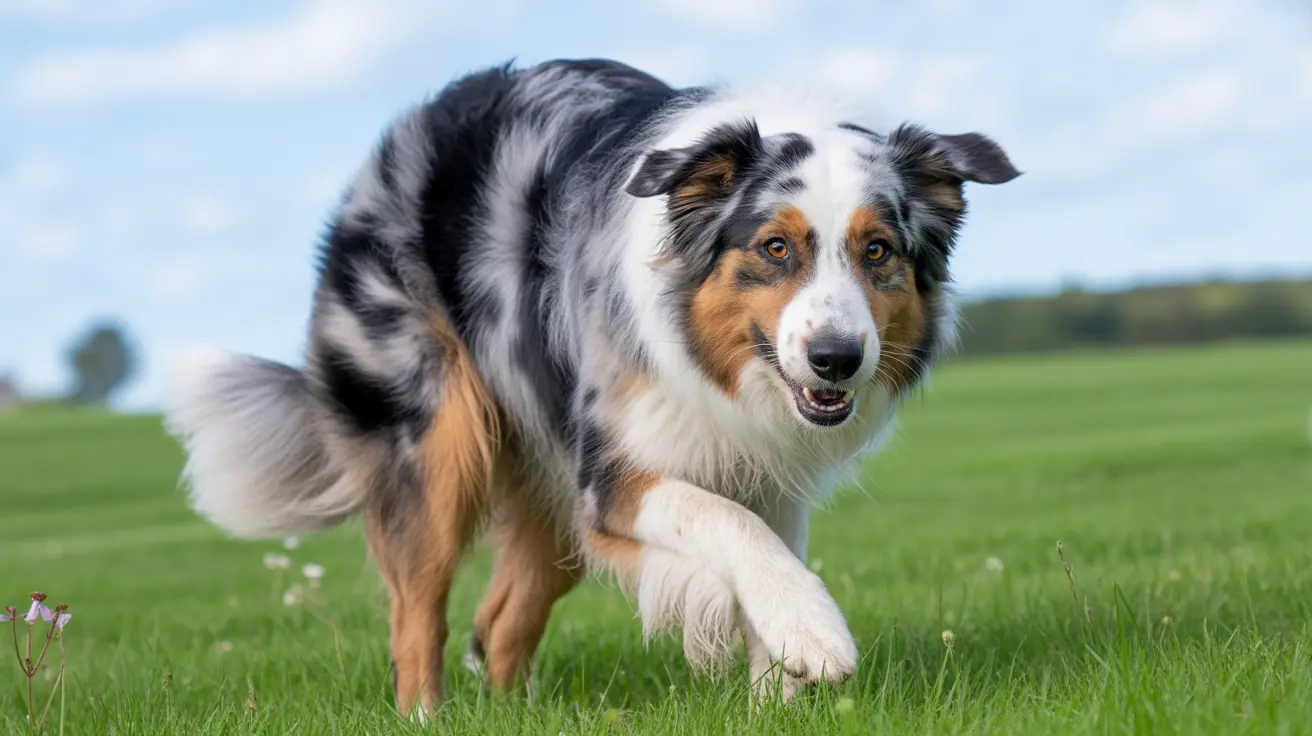If you've ever noticed your dog lowering their front end while keeping their rear up high, often accompanied by an enthusiastic tail wag, you're witnessing one of the most charming and meaningful canine behaviors - the play bow. This distinctive posture is more than just a cute gesture; it's a sophisticated form of communication that reveals fascinating insights into your dog's social intelligence and emotional connection with you.
Understanding why dogs bow to their humans can deepen your bond with your furry friend and help you better respond to their social cues. Let's explore the various meanings behind this endearing behavior and learn how to interpret it correctly.
The Play Bow: A Universal Canine Greeting
The play bow is a fundamental part of dog body language, characterized by your dog lowering their chest and front legs to the ground while keeping their hindquarters elevated. This position is usually accompanied by a relaxed, open-mouthed expression and a wagging tail, creating an unmistakable invitation to play or interact.
This behavior is so deeply ingrained in canine communication that it appears across all dog breeds and even in wild canids, though domestic dogs have refined it into a more sophisticated social tool.
The Many Meanings Behind Your Dog's Bow
Play Invitation
The most common reason your dog bows to you is as an invitation to play. This clear, intentional gesture signals that whatever follows - whether it's running, jumping, or playful barking - is meant to be friendly and fun, not aggressive or threatening.
Greeting and Excitement
Dogs often bow when reuniting with their favorite humans, especially after periods of separation. This gesture combines their excitement to see you with their desire to initiate positive interaction.
Social Bonding
When your dog bows to you, they're also strengthening your social bond. This behavior demonstrates trust and comfort in your presence, as dogs typically only display this vulnerable position to those they feel safe around.
Reading Your Dog's Body Language
The play bow rarely occurs in isolation. To fully understand your dog's message, pay attention to these accompanying signals:
- Relaxed, open mouth and soft eyes indicate friendly intent
- Tail wagging in broad, sweeping motions suggests happiness
- Playful barking or light bouncing shows excitement
- Repeated bows may indicate strong desire for interaction
Responding to Your Dog's Bow
When your dog bows to you, they're initiating communication and seeking engagement. Here are effective ways to respond:
- Acknowledge their invitation with positive attention
- Engage in play if appropriate for the situation
- Maintain a cheerful, encouraging tone
- Consider mimicking their bow to show you understand
Health and Physical Aspects
While primarily a social gesture, the play bow also serves practical purposes. This position allows dogs to stretch their muscles and prepare for physical activity. However, if you notice your dog bowing excessively or showing signs of discomfort, consult your veterinarian to rule out any physical issues.
Frequently Asked Questions
Why does my dog bow to me—what does it mean when my dog does a play bow?
When your dog bows to you, they're primarily inviting you to play or interact. This behavior is a friendly, non-threatening gesture that indicates they're in a playful mood and want to engage with you socially.
How can I tell if my dog wants to play or needs something when they bow?
Look at the context and accompanying body language. A play bow with an energetic tail wag and bouncy movement typically means they want to play. If combined with other behaviors like walking to the door or food bowl, they might be communicating different needs.
Is it safe to mimic my dog's play bow—and how do I respond to encourage play?
Yes, it's safe and often beneficial to mimic your dog's play bow. This shows you understand their communication and want to engage. Bend slightly at the waist while keeping eye contact and maintaining a friendly demeanor.
Are there times when dog bowing could indicate something other than wanting to play?
While play is the most common reason, dogs might bow during stretching, as a greeting, or occasionally to show submission. Context and accompanying body language will help determine the specific meaning.
At what age do puppies start using the play bow with people and other dogs?
Puppies typically begin using the play bow around 3-4 weeks of age as they start social play with their littermates. The behavior becomes more refined as they grow and learn to interact with both dogs and humans.
Conclusion
Your dog's bow is a beautiful example of their evolved ability to communicate with humans. By understanding and appropriately responding to this behavior, you can strengthen your bond and ensure more meaningful interactions with your canine companion. Remember that each dog is unique, and taking time to learn your pet's specific communication style will lead to a more rewarding relationship.






